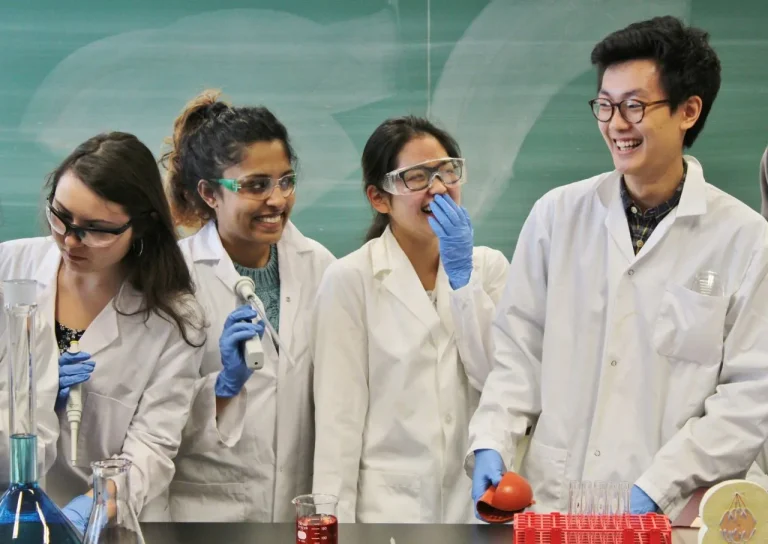Is Engineering An Applied Science? Examining The Relationship
From mechanical to electrical, engineering disciplines are responsible for many of the innovations and technologies we use every day. But is the field of engineering actually considered a branch of applied science?
If you’re short on time, here’s a quick answer: Yes, engineering is classified as an applied science, because it involves applying scientific principles and discoveries to create practical solutions for problems and human needs.
In this comprehensive guide, we’ll look at the characteristics of applied sciences, the scientific principles that engineering relies on, and why this practical application makes engineering an interdisciplinary applied science.
Defining Applied Science
Applied science refers to the practical application of scientific knowledge in various fields. It involves using scientific principles and theories to solve real-world problems and improve existing technologies.
Applied science focuses on the practical use of scientific discoveries to develop new products, processes, and technologies that have a direct impact on society.
Practical Application of Scientific Knowledge
One of the key characteristics of applied science is its emphasis on the practical application of scientific knowledge. Rather than focusing solely on theoretical concepts, applied science aims to use scientific principles to address practical problems.
For example, engineers use their scientific knowledge to design and build structures, develop new materials, and create innovative technologies that have a tangible impact on people’s lives.
Use of Scientific Method
Applied science relies on the scientific method to systematically investigate and solve problems. The scientific method involves making observations, formulating hypotheses, conducting experiments, and analyzing data to draw conclusions.
By following this rigorous and systematic approach, applied scientists can ensure that their findings are reliable and reproducible.
Interdisciplinary Nature
Applied science is often interdisciplinary in nature, drawing knowledge from various scientific fields to address complex problems. For instance, biomedical engineering combines principles from biology, chemistry, and engineering to develop medical devices and treatments.
This interdisciplinary approach allows applied scientists to tackle multifaceted challenges and come up with innovative solutions.
Goal of Solving Real-World Problems
The primary goal of applied science is to solve real-world problems and improve the quality of life. Whether it’s developing sustainable energy sources, designing efficient transportation systems, or finding cures for diseases, applied scientists work towards practical solutions that positively impact society.
The application of scientific knowledge in these areas helps address pressing issues and create a better future for all.
For more information on the relationship between engineering and applied science, you can visit www.sciencedirect.com.
Scientific Principles Used in Engineering
Engineering is often considered as the application of scientific principles to design and create innovative solutions to real-world problems. Several scientific disciplines play a crucial role in the field of engineering, including physics, chemistry, biology, mathematics, and material science.
Let’s explore how each of these disciplines contributes to the advancement of engineering.
Physics
Physics is the foundation of engineering, as it provides engineers with a deep understanding of the fundamental laws governing the physical world. Concepts such as Newton’s laws of motion, thermodynamics, and electromagnetic theory are essential for engineers to design structures, machines, and systems that function efficiently and safely.
Chemistry
Chemistry has a significant impact on engineering, particularly in materials science and chemical engineering. Engineers rely on chemical principles to develop new materials with specific properties, such as strength, durability, and conductivity.
Chemical reactions and processes are also utilized in various industries, including pharmaceuticals, energy production, and environmental engineering.
Biology
Biology has gained increasing importance in engineering, especially in the field of biomedical engineering. Engineers collaborate with biologists and medical professionals to develop medical devices, prosthetics, and tissue engineering solutions.
Understanding biological processes and systems is crucial for creating technologies that improve healthcare and enhance the quality of life.
Mathematics
Mathematics is the language of engineering. Engineers use mathematical concepts and methods to model, analyze, and optimize complex systems. From calculus and differential equations to linear algebra and statistics, mathematical tools enable engineers to solve problems, predict outcomes, and make informed decisions in various engineering disciplines.
Material Science
Material science deals with the study of the properties, structure, and behavior of materials. Engineers in this field explore the relationships between the composition, microstructure, and performance of materials.
By understanding these principles, engineers can design and select materials that meet specific requirements, whether it’s for building structures, developing electronics, or creating advanced composites.
For more information on the scientific principles used in engineering, you can visit the Engineers Australia website or refer to textbooks and research papers in the respective disciplines.
Hallmarks of Engineering as an Applied Science
Engineering can be considered as an applied science due to several distinguishing hallmarks. These hallmarks highlight the unique aspects of engineering that differentiate it from pure sciences such as physics or chemistry.
By examining these hallmarks, we can gain a deeper understanding of the relationship between engineering and applied science.
Design Process
The design process is a crucial aspect of engineering that sets it apart as an applied science. Engineers follow a systematic approach to problem-solving, starting with identifying a need or a problem.
They then proceed to gather relevant information, brainstorm potential solutions, and evaluate their feasibility. This iterative process allows engineers to create innovative designs that address real-world challenges.
Prototype Creation
One of the key hallmarks of engineering is the creation of prototypes. Unlike pure science, which focuses on theoretical models, engineering involves the development of tangible solutions. Engineers build prototypes to test and refine their designs, allowing them to identify potential flaws and make necessary improvements.
This hands-on approach is a fundamental aspect of applied science in engineering.
Product Testing and Analysis
Another hallmark of engineering as an applied science is the rigorous testing and analysis of products. Engineers conduct various tests to ensure that their designs meet the required standards and specifications. These tests may include stress tests, performance evaluations, and simulations.
By analyzing the results, engineers can make data-driven decisions and further refine their designs.
Focus on Functionality and Feasibility
Engineering places a strong emphasis on functionality and feasibility. Unlike pure sciences, which may focus primarily on theoretical concepts, engineering aims to create practical solutions that can be implemented in the real world.
Engineers consider factors such as cost, materials, and manufacturing processes to ensure that their designs are not only functional but also feasible to produce at scale.
Examples of Engineering Applied Sciences
Structural Engineering
Structural engineering is a prime example of how engineering is an applied science. It involves the design and analysis of structures such as buildings, bridges, and dams. Engineers in this field use scientific principles and mathematical calculations to ensure the structural integrity and safety of these structures.
For instance, they consider factors like load-bearing capacity, material properties, and environmental conditions to determine the best design and construction methods.
Electrical Engineering
Electrical engineering is another notable example of engineering as an applied science. It deals with the study and application of electricity, electronics, and electromagnetism. Electrical engineers design and develop electrical systems, such as power generation plants, circuits, and communication networks.
They apply scientific concepts to design efficient and reliable systems, considering factors like electrical conductivity, power distribution, and signal processing. This field of engineering plays a crucial role in the development of technology and innovation.
Chemical Engineering
Chemical engineering is the branch of engineering that applies scientific principles to design and operate chemical processes. It involves the study of chemical reactions, mass transfer, and process control to develop efficient methods for producing various chemical products.
Chemical engineers work in industries such as pharmaceuticals, petrochemicals, and food processing, contributing to the development of new materials, fuels, and medicines. They utilize scientific knowledge to optimize processes, improve safety, and minimize environmental impact.
Biological Engineering
Biological engineering is an emerging field that combines biology and engineering principles to develop innovative solutions for various applications. It involves the use of scientific knowledge to design and manipulate biological systems for practical purposes.
Biological engineers work on projects like genetic engineering, tissue engineering, and biomedical device development. They apply scientific concepts to understand and modify biological processes, aiming to improve healthcare, agriculture, and environmental sustainability.
For more information about these engineering fields, you can visit the following websites:
- American Society of Civil Engineers
- Institute of Electrical and Electronics Engineers
- American Institute of Chemical Engineers
- Biomedical Engineering Society
Conclusion
In summary, engineering leverages scientific knowledge and methods to create practical solutions, innovations, and new technologies. This goal of applying science to solve real-world problems definitively categorizes engineering as an applied science.







